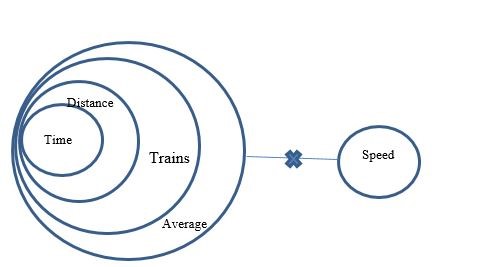Start learning 50% faster. Sign in now
All distances are trains (A) + All trains are averages (A) ⇒ All distances are averages (A) ⇒ Conversion ⇒ Some averages are distances (I) ⇒ probable conclusion ⇒ Some averages may not be distances (I). Hence, Conclusion I follows. All trains are averages (A) + No average is a speed (E) ⇒ No train is an speed (E) ⇒ Conversion ⇒ Some speeds are not trains (O). Hence, conclusion II follows but conclusion III does not follow. All times are distance (A) + All distances are trains (A). ⇒ All times are trains (A) + All trains are averages (A) ⇒ All times are averages. Hence, conclusion IV follows. ALTERNATE SOLUTION: Minimal Possibility 
If 'N' is the greatest three-digit number which when divided by 27, 6, 8 and 9 Leaves in each case the same remainder of 5, then the sum of the digits o...
The difference between two numbers is 3820. When a larger number is divided by a smaller number, the quotient and remainder are 32 and 7 respectively. F...
Find the greatest number of four digits which is divisible by 14, 30 and 42.
If a number 'a' is divisible by 18 and another number 'b' is divisible by 12, then (a2 – b2) is divisible by:
What will be the remainder when 742 is divided by 48?
A number n when divided by 6, leaves a remainder 3. What will be the remainder when (n2 + 5n + 8) is divided by 6?
If 45780x52 is divisible by 72, then find the sum of all possible values of 'x'.
The largest 5 digit number which is exactly divisible by ‘33’ is:
A six-digit number 11p9q4 is divisible by 24. Then the greatest possible value for (p + q) is
When a number is divided by 8, the remainder is half of the divisor and the quotient is 3 more than twice the product of the divisor and remainder. Find...